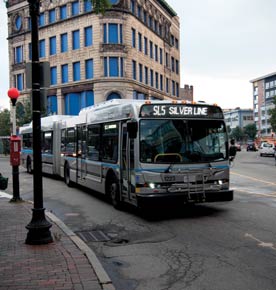The farmers’ market in Langley Park sells amazing crazy corn. It’s covered in mayonnaise and topped with cheese, which truthfully would make just about anything delicious but it’s particularly good on roasted corn. The farmers’ market is open each week on Wednesday afternoons in a diverse Maryland community just over the District of Columbia line, in an area better known for wide swaths of multi-lane roads than accessible public transportation options. If the Washington Metropolitan Area Transit Authority’s substantial expansion plans work out, however, all that might be changing.
Plans for a bus depot, a new Metro stop, better pedestrian facilities, and mixed-use development in the area have residents and housing affordability advocates in Langley Park worried. These features, while increasingly attractive to homebuyers not just in D.C. but also in towns and cities across the country, have local advocates worrying about how the new development will drive up real estate demand in the area, raise housing prices, and make what’s currently a working-class neighborhood simply unaffordable.
This is a story familiar to housing affordability advocates, residents, and planners in neighborhoods around the country. Public and private efforts to create smart growth features like neighborhood parks, safe sidewalks, local coffee shops, and transportation choices are often seen as threats rather than as benefits. Features like these can indeed raise real estate prices, but that isn’t necessarily a reason for smart growth and housing affordability to diverge.
The challenge for advocates of both smart growth and housing affordability is to make sure the high demand for smart growth neighborhoods does not force out the people who can benefit most from them. This tension is understandable, but not unmanageable. The two issues share many common goals and, increasingly, advocates for both get better results when they join forces. Strategies that can keep neighborhoods affordable are already integral to smart growth development, and communities across the country are using smart growth strategies to improve affordable housing. Working toward these complementary goals can build wealth for existing communities, reduce costs for households and taxpayers, and create healthier, more stable places for all of us.





Comments